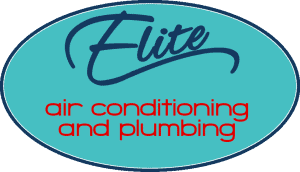AC SEER Rating Explained
Every Texas, homeowner wants their house to be as energy-efficient, especially during the grueling summer months when most people use their air conditioners around the clock. Here is the key to keeping your energy bills down while still remaining comfortable in the summer heat with an energy-efficient air conditioning unit. Thinking about upgrading your air conditioner. Well, there are several things you should know before buying a new unit. There are a lot of parts that go into figuring out and understanding what a good SEER rating is for your home or business.

Home Air Conditioner Seer Ratings Explained – What is SEER Rating?
SEER stands for the seasonal energy efficiency ratio (SEER). The SEER rating is based on the amount of energy it consumes compared to its cooling output through the cooling seasons. In other words, the SEER measures your air conditioning and heat pump cooling efficiency. When you purchase a new air conditioning unit, it comes with a SEER Rating, which indicates the energy efficiency of a particular air conditioning unit. You can find this SEER rating, it is a number prominently displayed on the bright yellow Energy Guide sticker on the side of all air conditioners and other HVAC equipment.
According to the requirements by the U.S. Department of Energy, sets the energy-efficiency standards for HVAC equipment that manufacturers must meet. In Texas, your air conditioning unit must have, at minimum, a SEER rating of 14, to a maximum of 21 or 25 SEER rating. The higher the SEER rating, the more energy efficient the unit is, and the more money you can expect to save by running it. Generally, the 14 SEER units are a good SEER rating for most people…these AC units are considered the work-horses; rugged, tough, and most importantly, reliable in any home or business.
When you’re looking into a new AC unit, there are several choices between several SEER ratings. If you just look at the SEER rating on the yellow sticker, you may be tempted to buy the highest SEER system and be done with it. If you are not on a budget, then you have that option, although it’s not really cost-effective. When determining what SEER rating is best for you and your home, it’s better to do a cost analysis of how much money you will save with a higher-efficiency system compared to the upfront cost. A good rule of thumb, a good SEER rating is the highest you can afford while still being cost-effective.
It is important to speak with your Elite Heating and Air Conditioning HVAC technician and make sure that you’re getting the best unit for your home?
The efficiency of your system can also depend on the size of your home, the external climate, the need for insulation, the kind of current ductwork and other variables to a properly functioning unit. Also, keep in mind, the square footage that you’re intending to cool because you will need a unit that’s sized to match your home or business needs. Buying an air conditioning unit that’s too large can be just as bad as purchasing one that’s too small. So, it’s important to ensure that you choose an air conditioner with the right SEER rating. For example, people living in Austin, Texas, which has very hot summers, would need more AC output for their square footage then somebody living in Montana.
Still on the fence…..?
Think about this, the more cooling or heating a system puts out for each unit of energy it consumes, this means the unit will receive a higher rating. Thus it is most likely your AC unit is the most energy consuming appliance in your home. So, the higher the efficiency rating of your system, the less energy it will consume, this means lower utility bill costs for your home or business and less of an impact on the environment. Meanwhile, being energy efficient and saving you money over a period of time.
To get the most out of your system, make sure that your home doesn’t have any issues that could impact the efficiency of your new air conditioning unit. Make sure a professional HVAC technician to examine your ductwork. These ducts can become damaged over time and develop air leaks, which lowers the efficiency of your AC unit. You will need to have your ductwork sealed and have more insulation installed to help with the efficiency savings of your unit.
When AC units perform inefficiently, they cycle on and off quickly. This is a problem, we see this with over-sized installed AC units. The SEER ratings assume that the air conditioner will be used in an appropriately sized house and experience decent run times.
You will need to pay more upfront if you want an air conditioning unit with a higher SEER rating. However, you’ll save a lot of money by lowering your energy bills over the long-term. But, before you purchase a new AC unit, think about if you’re not expecting to be in the home for much longer, you may not want to spend as much money on a new AC unit, although a better unit can typically increases the resale value.
However, you are in luck, Elite Heating and Air Conditioning has financing available. Also, ask us about any specials, offers, extra incentives, manufacturer specials, tax credits, or rebates. Usually, utility companies will often compensate homeowners to install high-efficiency systems, which can help save you some money on cooling your home. While the SEER rating is important, it’s only the first step in having an efficient system.
If you’re still unsure about the effect of SEER rating on your home’s cooling system, give Elite Heating and Air Conditioning a call at (512) 637-4237. Our representatives and technicians would love to talk to you and offer assistance in any way on SEER ratings and a new AC unit for your home or business.





 We are proud to have earned over 700 Google Maps Reviews and a staggering 4.9 Rating.
We are proud to have earned over 700 Google Maps Reviews and a staggering 4.9 Rating.